How to Choose the Best Produce at the Grocery Store, According to a Chef
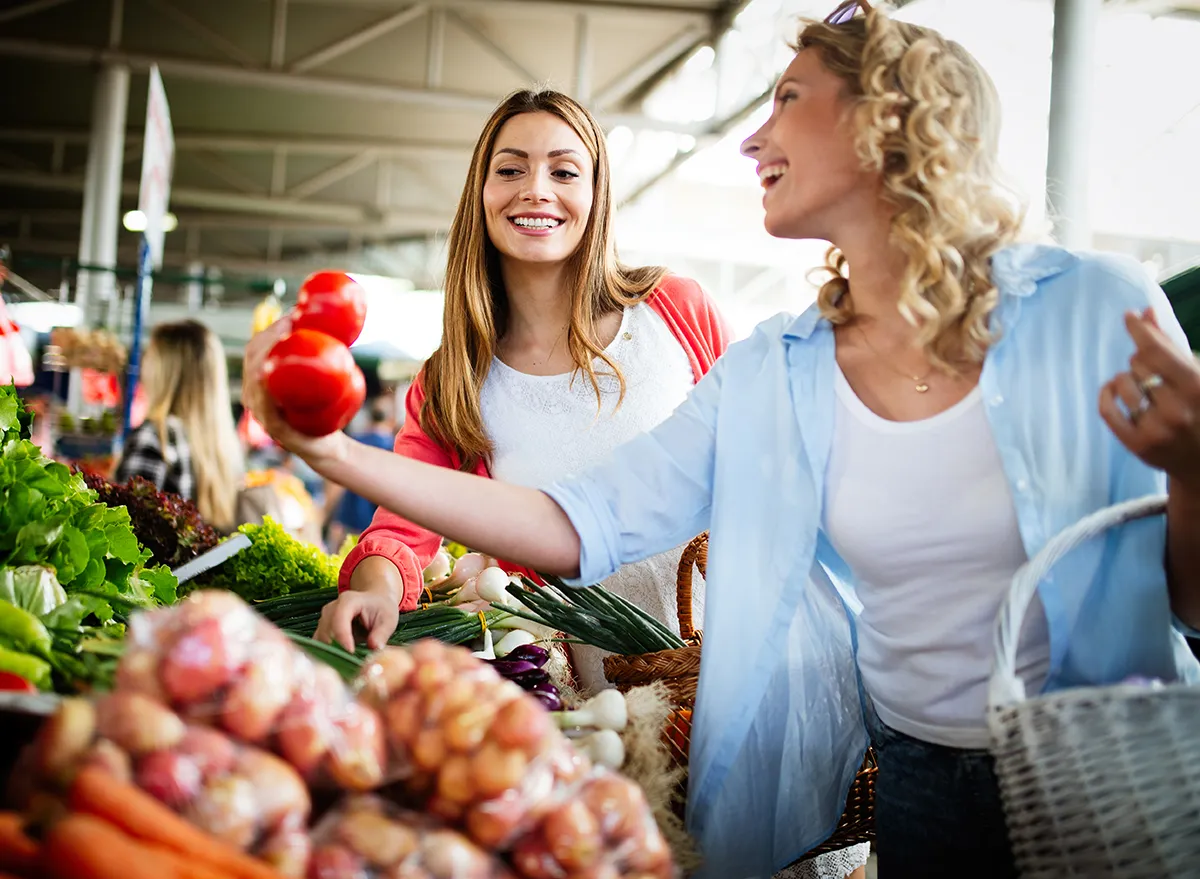
Many of us walk into a grocery store with a list of healthy foods we need for the week. We examine the piles of apples, tomatoes, and peppers, and look for the ones with the least blemishes, the firmest feel, or the most vibrant color. We sometimes misjudge the ripeness and end up not using the food before it spoils, and we toss it. Or, we cut into it before it’s ready to be eaten to discover a flavorless fruit.
If you talk to the experts, the art of picking and keeping great produce is an acquired skill, one that can be harnessed with a few guidelines and lots of practice.
When it comes to your produce, it’s more complicated than just fruits and vegetables. You can break down the classification of each one further. Fruits can be categorized into small, tropical, subtropical, stone, pome, or melons, while vegetables can span fungi, sprouts, root, row crops, vine-grown, legumes, solanaceous, and more. There’s no one-size-fits-all when you’re dealing with this wide range of textures, structures, and tastes.
Abra Berens knows this well, as a chef and cookbook author of all-encompassing food manuals like Ruffage: A Practical Guide to Vegetables and Grist: A Practical Guide to Cooking Grains, Beans, Seeds, and Legumes. She’s also the executive chef at Granor Farms, an organic vegetable and grain farm in Three Oaks, Mich., where she hosts farm-to-table meals to “broaden people’s understanding of organic farming, our growing practices and the food we produce,” according to her site.
Berens’ latest release, Pulp: A Practical Guide to Cooking with Fruit, is “the A to Z of fruit,” with over 200 recipes for enhancing your dishes with 15 different fruit varieties—from apricots to quince. Her depth of knowledge in fresh-grown foods blossomed out of her mastery on the farm and in the kitchen. Now, she reveals her tips to Eat This, Not That!
Here’s how you hone your skills and leave the grocery store with the highest-quality produce you can find.
Use your senses to assess the quality
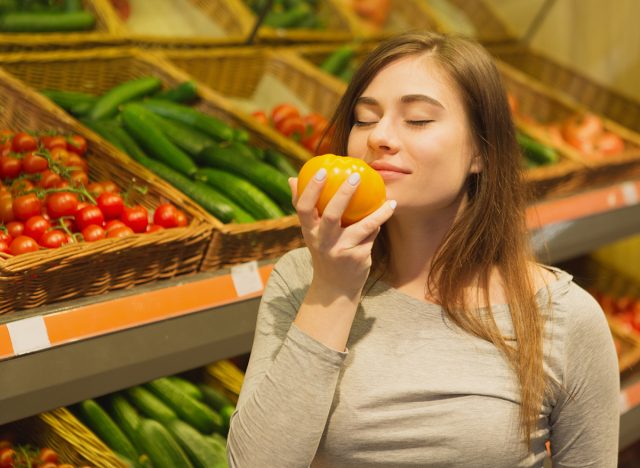
Most know that look and feel is a trusty indicator of quality, but you may not be using all of your senses. Berens says that one of the best ways to tell if that package of strawberries in front of you is going to taste sweet and juicy is to examine it from all sides. There are three measures of ripeness: smell, weight, and color. Each variety of fruit or vegetable will vary, however, so it’s important to get familiar with the types of foods you want to use.
“For fruit, each one is different, because you’re not going to get a ton of smell off of rhubarb. So if you’re waiting for a great smell to know when it’s ripe, you’re going to be waiting for quite a while. But [with] melons, you should be able to smell them from really far away,” Berens says. “And if you pick them up, and they feel heavy, and they look like they have a warm undertone, even a honeydew–it’s green, but it will have this warmth to the undertone of it. The same is true for apples, stone fruits like peaches and nectarines, and even apricots to a degree.”
The bottom line here is a little bit biological: foods look better in order to signal that they’re ripe for the harvest. “You just start to kind of get that sense that they’re enticing you,” Berens adds. “And that is the plant’s goal, is to get eaten. And so it’s going to make itself as attractive as possible. They’re like, come on over here, pick me.”
For specific fruits and vegetables, Berens’ books Pulp and Ruffage give qualitative “How to Select” and “Signs of Ripeness” guidelines to procure the best and ripest.
Local and seasonal can be better, but not always
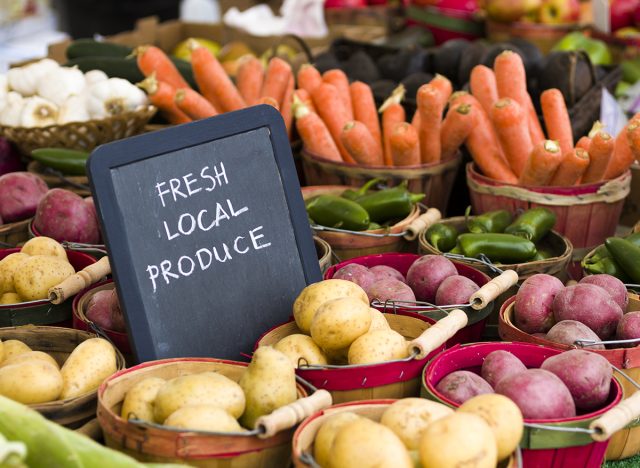
“Local” and “seasonal” are terms frequently found in the same sentence. They usually stand in for healthy, economically beneficial, or environmentally sustainable, and that’s sometimes a misunderstanding, according to Berens. “Local food is grown within the boundaries of a particular region. Seasonal food refers to food that is harvested in the season when it is grown,” she explains in Pulp.
Local or seasonal produce can be better buys, each for different reasons, but neither one guarantees that the food is in peak condition or flavor. Local fruits and vegetables are often able to arrive closer to the proper ripeness, and seasonal ones may be easier to get your hands on during a particular time of the year. “I think you’re more likely to get something delicious if it’s local, because produce suffers during transit,” says Berens. “So either in order to make the trip easier, it’s often either picked under ripe so that it doesn’t bruise or damage as easily [from a non-local source].
However, if your local produce is coming from a smaller grower, you can expect a higher price tag, in order to offset the farmer’s high land and labor costs. “Local food is often more expensive because the true cost of the production of that food is passed directly on to the consumer,” Berens writes in Pulp. “You’ll have to decide whether you want to allocate your resources to it.”
If you do decide to opt for local, not only will you find some great foods, but your dollar goes a long way for small communities. The American Independent Business conducted a 2012 economic impact analysis that found independent, locally owned businesses recirculated three times more revenue in local jobs and community wealth than chain businesses.
“I try to buy local food as often as possible. The food is fresher, and farmers selling directly are generally farming more sustainably and get a better price for their product,” Berens writes in Ruffage. She adds, “Our rural places are not thriving, necessarily. This is a way that we can ensure that we are getting a lot of bang for our buck in terms of economic growth.”
Of course, there are some nutritious needs you might always keep stocked, and that means you’re no longer able to shop within the local-seasonal selection, as Berens calls it. That’s where frozen can be a great alternative. “Frozen or canned produce is often harvested at peak ripeness and processed to withstand time and travel, so it is a great option for full flavor and year-round availability,” she writes in Pulp.
Organic can be worth it, but it’s not the only factor
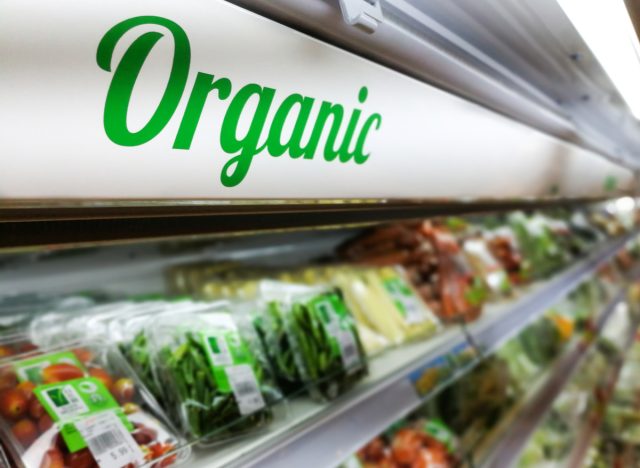
You’ve also probably heard that you should be eating organic whenever possible, and there’s good reason for that. Certified organic foods can be healthier than their conventionally grown counterparts. They’re less likely to contain as many pesticides, may have more vitamin C, iron, magnesium, and phosphorus, and use better-for-the-planet farming practices.
In the absence of a farmer-to-consumer relationship, Berens looks for the certified-organic label to vet fruits and veggies as a marker of quality. “It gets a thumbs up if it’s organic, because [it supports] some of the belief systems that I have: not using synthetic fertilizers or herbicides or pesticides,” she explains. “If I need juice for lemon curd, I’m just going to buy organic lemons, because they are federally regulated and can be trusted as a standard.”
That said, Ruffage readers are familiar with Beren’s holistic approach to buying produce. The cost-benefit analysis can get complex. Not all organic foods are strictly good for the planet. Farmers and suppliers have to make choices about whether or not they can sell organic goods depending on environment conditions and production methods. Sometimes buying smaller can be better for the community overall.
“I try to buy organic. The environmental benefits of organic farming are important to me. I also believe that organic production makes economic sense for farmers,” she writes. “I also shop at a small, independent grocery store where neither local or organic are reliably available because I fear what consolidation into a handful of big stores is doing to our distribution networks.”
If the cost is a barrier to getting fresh foods, however, then remember–it’s much more important that you eat your whole foods, regardless of how organic they are.
Get to know your farmers
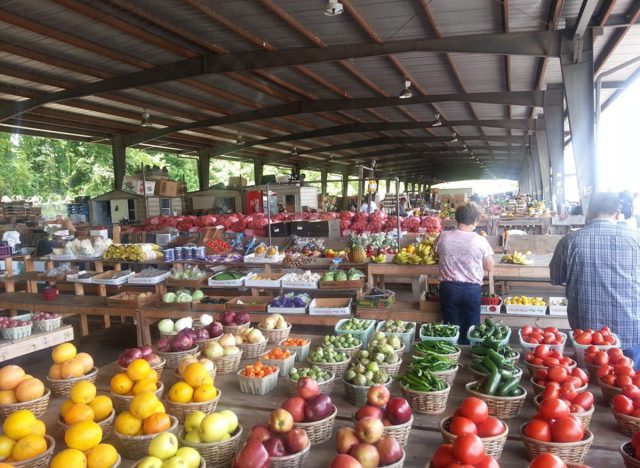
Usually, grocery shopping looks like walking into a supermarket and grabbing things out of pre-labeled boxes. But if you want the best finds, you should consider seeking out farmers markets. Berens believes it’s important to develop relationships with your nearby growers to experience and start to recognize the best produce. “If you love the food, you have to love the people who are making [it]. You have to understand at least what that work is.”
The discussions with farmers can open up conversations about their growing practices, as well as new food discoveries. Berens has a few magic words she likes to employ to find out: “What are you excited about?”
“I don’t always go to the farmers market to shop as my grocery store, but I go to be inspired and to learn what they’re excited about,” she says. She explains how one of her favorite recipes came to be. “I had never had a ground cherry until I went to a market and was talking with someone else…I just said, what are you excited about? And they were like, ‘Oh my gosh, have you tried these ground cherries?’ They peeled back the paper and gave it to me, and it was a totally new flavor. I was so excited to cook with it.”
Once you get familiar with the farm-grown varieties of cherries, tomatoes, and squash, you’ll be more equipped to walk into a supermarket and spot what looks good, develop a sense of how it will taste, and know what’s worth buying.
Get more bang for your buck
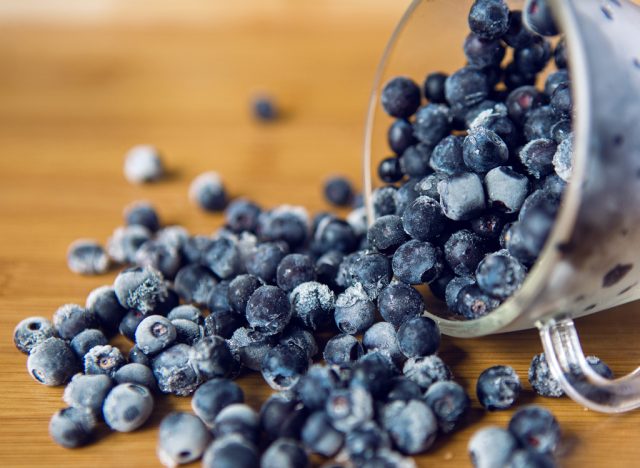
Ultimately, bringing home the best can get pricey. With few exceptions, the grocery stores that carry the highest quality produce also tend to cost more. However, there are ways you can get a better deal on delicious items. Opting for more frequent grocery trips allows you to snatch up the foods that stores need to get rid of while they’re still fresh. Just make sure you’re going to get to it in time. (Bonus: this helps everyone cut down on food waste.)
“Places like Trader Joe’s and [other stores] are salvaging stuff and getting it out…I would go at least once or twice a week, with the idea that I’m going to eat it in the next couple of days,” Berens notes. “I want that food to be eaten. I don’t want it to go into a landfill.”
Of course, if you do sink the money into an antioxidant-full package of berries or a bag of omega-3-rich avocados, you want to be intentional about using them before they spoil, so you avoid throwing those dollars into the trash.
Berens says that the freezer is her number one way to avoid wasting tasty treasures: “You buy a pint of blueberries, you get down to the last inch in the bottom, and they’re wrinkly. Most people just throw those out. When you first notice that little bit of wrinkle, pop them in the freezer, and then you’ve done it. You can freeze most things and use it in something else.”
You probably don’t want to cook with thawed fruits or vegetables the same way as you would with fresh, since the texture is altered from the freezer–but the flavors can still be used to make something delectable. She recommends throwing frozen produce into stews and frozen fruit into baked foods to make sure you’re getting the most out of your goods.









